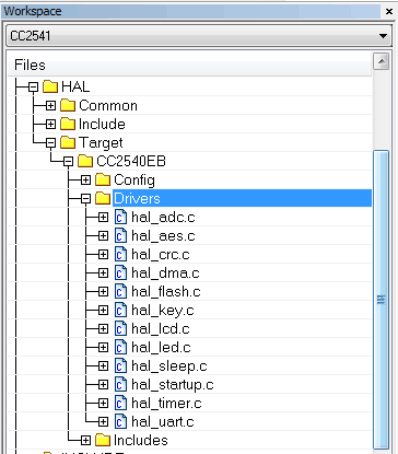SWRU271I October 2010 – January 2020 CC2540 , CC2540T , CC2541 , CC2541-Q1 , CC2640R2F
- Preface
- 1Overview
- 2The TI Bluetooth Low Energy Software Development Platform
- 3The Operating System Abstraction Layer (OSAL)
- 4The Application and Profiles
-
5The Bluetooth Low Energy Protocol Stack
- 5.1 Overview
- 5.2 Generic Access Profile (GAP)
- 5.3 GAPRole Task
- 5.4 Gap Bond Manager (GAPBondMgr)
- 5.5
Generic Attribute Profile (GATT)
- 5.5.1 GATT Characteristics and Attributes
- 5.5.2 GATT Services and Profile
- 5.5.3 GATT Client Abstraction
- 5.5.4 GATT Server Abstraction
- 5.6 L2CAP
- 5.7 HCI
- 5.8 Library Files
- 6Drivers
- 7Creating a Custom Bluetooth Low Energy Application
- 8Development and Debugging
-
9General Information
- 9.1 Overview
- 9.2 Porting From BLE-Stack 1.5.0 to 1.5.1
- 9.3 Porting From BLE-Stack 1.4.2 to 1.5.0
- 9.4
Porting From Earlier BLE-Stack Versions
- 9.4.1 Porting BLEv1.4.1 Projects to BLEv1.4.2
- 9.4.2 Porting BLEv1.4.0 Projects to BLEv1.4.1
- 9.4.3 Porting BLEv1.3.2 Projects to BLEv1.4.0
- 9.4.4 Porting BLEv1.2 Projects to BLEv1.3
- 9.4.5 Porting From CC2540 to CC2541 Project
- 9.5 Release Notes History
- 9.6 Document History
- A GAP API
- B GAPRole Peripheral Role API
- C GAPRole Central Role API
- D GATT/ATT API
- E GATTServApp API
- F GAPBondMgr API
- G HCI Extension API
- Revision History
6.1 Overview
The hardware abstraction layer (HAL) of the CC254x software provides an interface of abstraction between the physical hardware and the application and/or protocol stack. This HAL allows for the development of new hardware (such as a new PCB) without making changes to the protocol stack or application source code. The HAL includes software for the SPI and UART communication interfaces, AES, keys, LCD, and LEDs. The HAL drivers that support the following hardware platforms include the following:
- SmartRF05EB + CC2540EM
- SmartRF05EB + CC2541EM
- CC2540 Keyfob
- CC2541 Keyfob
- CC2541 SensorTag
- CC2540 USB Dongle
When developing with a different hardware platform, you might need to modify the HAL source for compatablility.
Find the HAL files in the sample projects by doing the following:
- Click HAL.
- Click Target.
- Click CC2540EB.
- Click Drivers, see Figure 6-1.
 Figure 6-1 HAL Drivers
Figure 6-1 HAL Drivers The following drivers are supported: